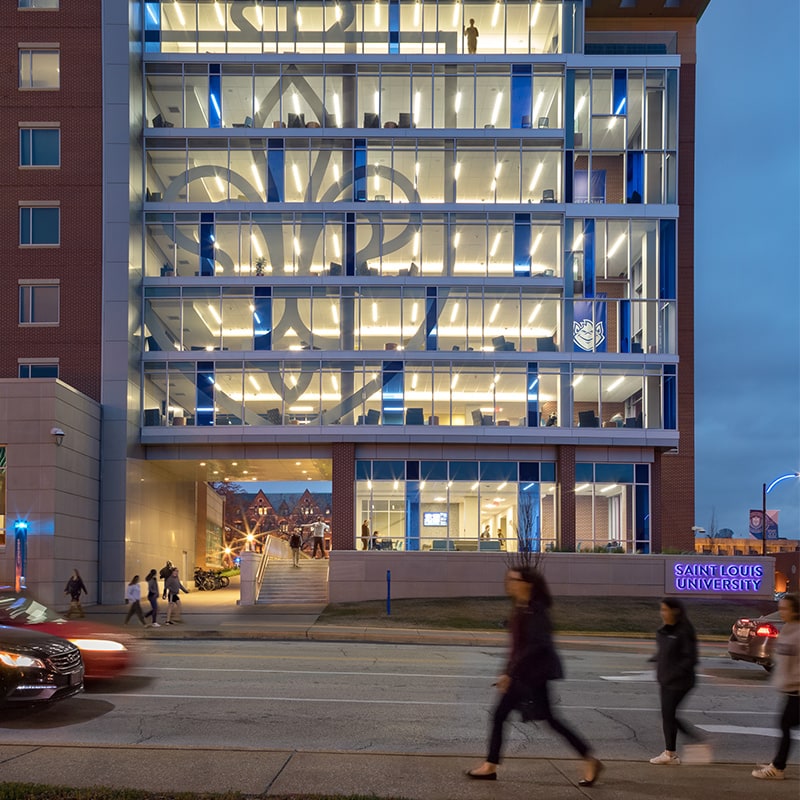Student Housing Trends and Best Practices

Tuesday, July 23, 2019
Now more than ever, collegiate housing design is focused on promoting positive mental health outcomes through on-campus living. Loneliness can have health outcomes equally as devastating as smoking cigarettes, and student housing is now featuring an increased amount of square footage dedicated to community space in hopes of decreasing isolation. This takes the form of shared lounge areas, game rooms, community kitchens, and collaborative study spaces that encourage students to interact with one another. While the design of these community spaces is vital to community-building, much of their success also depends on how the college or university programs them. We work very closely with our clients to understand their culture and goals to be sure they can make the most of these spaces through planned activities that incentivize students to use them.
While current housing design trends aim to decrease the isolation of first- and second-year students, they also aim to support mental health through a greater connection to nature. A recent study showed that being in a room with ample natural light and an outdoor view promoted faster physical healing and increased emotional well-being. In all of our student life projects, we promote greater relationships to the outdoors, including rooftop gathering spaces, an abundance of natural light, and plenty of greenery throughout.
If anything is certain, there is no shortage of evolution in the design of student housing. Other considerations that we frequently talk about with our clients include bathroom configuration and sustainability initiatives. Shared locker room-style showers and bathrooms are giving way to single-stall bathrooms and showers that meet the needs of all students, providing privacy for transgender students and accessibility for disabled students. When it comes to sustainability, we encourage increased use of recycled building materials, operable windows, and a new system that only allows HVAC operation in each students’ room only when their electronic key is present in the room.
Meeting evolving student needs and supporting retention through the design of student housing is a constantly-shifting landscape. Our experience on a range of student housing projects across the country has shown us that built-in design flexibility is key to allowing for the next paradigm shift in student expectations.